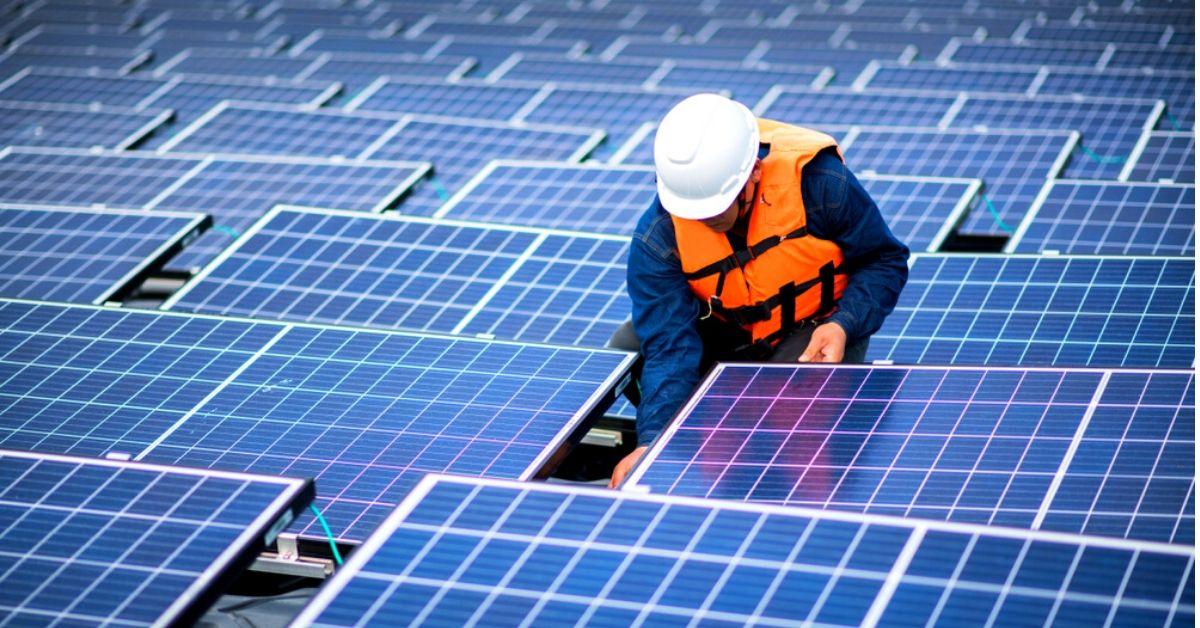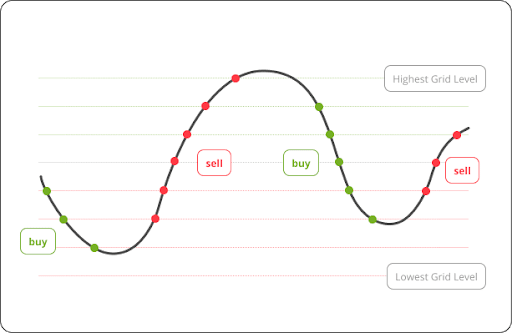
Harnessing the sun’s energy to produce electricity can reduce homeowner utility bills and carbon footprints. But, without proper solar panel maintenance, small dips in production eat into those savings and extend payback periods.
Maximizing efficiency is the process of using the fewest resources to accomplish tasks quickly and correctly. It is crucial for businesses to remain competitive in today’s fast-paced manufacturing landscape.
- Clean the Panels
Solar panels are a simple system to maintain. They don’t have moving parts and are made out of tempered glass that holds up well under the elements. However, they need regular cleaning to keep them at their best. Dirt and other debris can accumulate on solar panels, reducing their ability to absorb sunlight and reduce their overall efficiency. The good news is that a simple water spray can easily remove dirt and other debris from a garden hose.
Ideally, solar panel cleaning should be done weekly or monthly. However, there are many variables that can affect how often you need to clean the panels. For example, areas with wooded landscapes may need to be cleaned more frequently because leaves can drop on the PV cells and obstruct sunlight absorption. Deserts also have the potential to see more dust build up on solar panels because it clings to them and decreases their efficiency.
The simplest way to clean solar panels is by using a garden hose with a non-abrasive cleaning tool like a soft brush or a squeegee. You should avoid using wire brushes or roof rakes because they can scratch the surface of the panels and cause damage over time. Additionally, you should never wash your solar panels when they are hot or in the direct sun, as this can crack the glass covering. Instead, you should choose an overcast day or early morning to clean the panels so they don’t experience a sudden temperature change.
After the hose rinses off most of the debris, it’s important to scrub any problem areas with a sponge or squeegee dunked in soapy water from a bucket. Scrubbing is important, but it’s also crucial to avoid rubbing the panels too hard or using pressure, as this can cause scratches on the panel surface. This can lead to a reduction in solar energy intake by up to 30 percent, according to studies by Panat and Varanasi.
Once you’ve finished, you should rinse the panels again with a clean bucket of clean water. Then, you should check the connections on your solar panels to make sure that they are still tight and secure. If there are any loose connections, you should gently tighten them.
- Check the Connections
Solar panels convert sunlight into electricity by using photovoltaic (PV) cells. These are wired together in a series circuit through junction boxes on the backs of each panel, which connects to an inverter to convert the direct current (DC) output into the alternating current (AC) used by home devices. If a junction box or connection fails, electricity production will stop. If you notice a sudden decrease in energy production, check your solar system connections as soon as possible.
Oftentimes, these failures are caused by airborne dust particles, sticky tree and plant sap, lichen, soot, and bird droppings. When they accumulate on a PV cell, it causes shading and prevents sunlight from reaching the solar cells. This leads to poor system performance and a loss of financial return for the owner and investor.
Cleaning your solar panels is important for their functionality, but not all cleaners are created equal. It’s best to use a cleaner that doesn’t contain harsh chemicals and is suitable for outdoor use. The most popular cleaners on the market are usually biodegradable and come in kits with a bucket of soapy water, wipers, and a brush. Some solar power customers even use a garden hose to rinse their panels.
Many people who install solar panels forget about them and don’t keep an eye on their energy production levels. Keeping a record of your solar panel generation over time will allow you to see the patterns of daily changes in energy output and quickly spot any inconsistencies. You can also hook up your solar panels to energy management software like Surple to track the electricity produced by them and get alerts whenever their output falls below a certain threshold.
Setting up your solar panels with the highest possible efficiency is also important. This can help you save money and reduce your carbon footprint. A higher efficiency means that more of the panel’s surface is able to convert sunlight into electricity, so you can get away with using fewer solar panels for a given power capacity. It’s worth mentioning that the maximum efficiency of a solar panel can vary depending on where it’s installed and how it’s configured, so do your research before choosing the right one for your needs.
- Check the Inverter
The inverter converts DC power from the solar panels into usable AC power. Its efficiency is a function of the input DC voltage. Inverter manufacturers publish their efficiency data on a graph that shows the peak performance versus the input power and DC voltage range. It’s important to check this data on a regular basis (ideally, at least once per month).
The optimum inverter capacity depends on the irradiance in each location and is determined by experience. A good inverter should operate at maximum efficiency during most of the day, although the hourly output will tend to decline from early to late in the afternoon due to shading and varying irradiance.
An inverter should be installed in a well-ventilated area and protected from water, dust, and debris. Inspecting the inverter regularly for any signs of moisture or corrosion is a good idea. The inverter should also be insulated from grounding. This is particularly important for a grid-interactive inverter, which feeds excess energy back into the power grid and does not operate independently from the utility grid.
It’s also a good idea to keep a close eye on the display panel on your inverter and look for system errors. Some errors are obvious, while others may be difficult to detect. An experienced technician can help you identify these errors and resolve them.
Besides checking the inverter and connections, it’s important to do a visual inspection of your system on a regular basis. The best way to do this is to hire a professional for a full-service check, which involves detailed electrical testing and a thorough visual inspection of the equipment and cabling. It’s important to be aware of the electrical conventions and safety standards for various applications, as they differ from country to country.
Some of the most common problems that reduce system performance include shading from trees and buildings, excessive leaf coverage, and vermin damage to the panels and cabling. A professional can advise on which trees to keep trimmed and how to avoid overly dense shade. They can also check for signs of birds, possums, and rats building homes in your roof space. They can also check that junction boxes have a tight seal and are not exposed to the elements and verify that the inverter has a clean DC voltage.
- Check the Batteries
Unlike solar panels, batteries are stationary and do not have moving parts. As such, they are less susceptible to wear and tear but still need maintenance. Fortunately, the process is relatively simple. First, charge your batteries to their full capacity. Then, check their voltage with a digital multimeter. The reading should be roughly the same as or a little less than what you saw with the panel. If the voltage is lower, there may be a problem with the battery, solar regulator, or one of the wires.
Another good way to monitor the battery is by using a datalogger. This will provide you with detailed information on the state of the battery throughout the day, including its voltage and current levels. You can then compare the readings to the manufacturer’s specifications to ensure that it is charging properly.
You should also inspect the charger and confirm that it operates normally. It will often have LED lights or a digital display indicating whether the solar panels are successfully charging the batteries. If these indicators are working correctly, you can then take a look at the wires that connect the solar regulator to the batteries and make sure they are not damaged or disconnected.
Lastly, it is important to keep your solar panels free of obstructions that could limit their performance. This includes anything that is blocking the sunlight, such as trees, debris, or even a small amount of snow. This is especially important if your panels are located on uneven ground or near trees with branches that might fall on them. It is also a good idea to regularly trim any tree branches or shrubs that are growing over the solar panels, as this will prevent their leaves from covering them and hindering their efficiency.
Ideally, all of these steps should be performed by an experienced professional to minimize the risk of damage. However, if you notice that your solar panels aren’t producing as much energy as they should be, it is time to perform some maintenance.
RELATED ARTICLES
Latest Articles
 Unlocking Success: Mastering Bank PO Interview PreparationIn EducationApril 24, 2024For banking careers, PO interviews stand as formidable […]
Unlocking Success: Mastering Bank PO Interview PreparationIn EducationApril 24, 2024For banking careers, PO interviews stand as formidable […] The Strategic Value of Purchasing FontsIn TipsApril 18, 2024In today’s visually driven world, fonts are more […]
The Strategic Value of Purchasing FontsIn TipsApril 18, 2024In today’s visually driven world, fonts are more […] Revolutionizing Business: How AI Transforms Customer Experience in the Inflatable IndustryIn BusinessApril 16, 2024Inflatable water slides are the epitome of summer fun, […]
Revolutionizing Business: How AI Transforms Customer Experience in the Inflatable IndustryIn BusinessApril 16, 2024Inflatable water slides are the epitome of summer fun, […] Most Asked Microservice Interview Questions For 2024In TechnologyApril 2, 2024To keep up with changing trends in the tech industry […]
Most Asked Microservice Interview Questions For 2024In TechnologyApril 2, 2024To keep up with changing trends in the tech industry […] Best JavaScript and CSS Library In 2024In TechnologyApril 2, 2024With the ever-expanding functionality of web […]
Best JavaScript and CSS Library In 2024In TechnologyApril 2, 2024With the ever-expanding functionality of web […] Front-End Development Trends to Follow in 2024In TechnologyApril 2, 2024For better engagement, the front-end development of […]
Front-End Development Trends to Follow in 2024In TechnologyApril 2, 2024For better engagement, the front-end development of […] Simplifying Mealtime: Meal Prepping for a Family of FourIn UncategorizedMarch 22, 2024In the hustle and bustle of daily life, planning and […]
Simplifying Mealtime: Meal Prepping for a Family of FourIn UncategorizedMarch 22, 2024In the hustle and bustle of daily life, planning and […] How to Freeze Dry Candy With And Without a Machine?In FoodFebruary 27, 2024A candy lover constantly searches for novel and […]
How to Freeze Dry Candy With And Without a Machine?In FoodFebruary 27, 2024A candy lover constantly searches for novel and […] How to Get Something Out Of Your Eye Immediately?In healthFebruary 27, 2024Getting something inside your eyes can be frustrating […]
How to Get Something Out Of Your Eye Immediately?In healthFebruary 27, 2024Getting something inside your eyes can be frustrating […] The Evolution of Remote Control Technology: From RC Cars to DronesIn TechnologyFebruary 22, 2024Remote control technology has come a long way since […]
The Evolution of Remote Control Technology: From RC Cars to DronesIn TechnologyFebruary 22, 2024Remote control technology has come a long way since […] Unveiling the most popular carnival costumes: A colorful parade of creativityIn FashionFebruary 19, 2024In the world of festivities and merrymaking, few […]
Unveiling the most popular carnival costumes: A colorful parade of creativityIn FashionFebruary 19, 2024In the world of festivities and merrymaking, few […] Custom GPTs: The Next AI Opportunity for BusinessesIn Business, TechnologyFebruary 14, 2024The rise of artificial intelligence has transformed […]
Custom GPTs: The Next AI Opportunity for BusinessesIn Business, TechnologyFebruary 14, 2024The rise of artificial intelligence has transformed […]
stopie.com is a participant in the Amazon Services LLC Associates Program, an affiliate advertising program designed to provide a means for sites to earn advertising fees by advertising and linking to Amazon.com.
Clicking on an Amazon link from stopie.com does not increase the cost of any item you purchase.
We will only ever link to Amazon products that we think our visitors may be interested in and appreciate learning more about.



